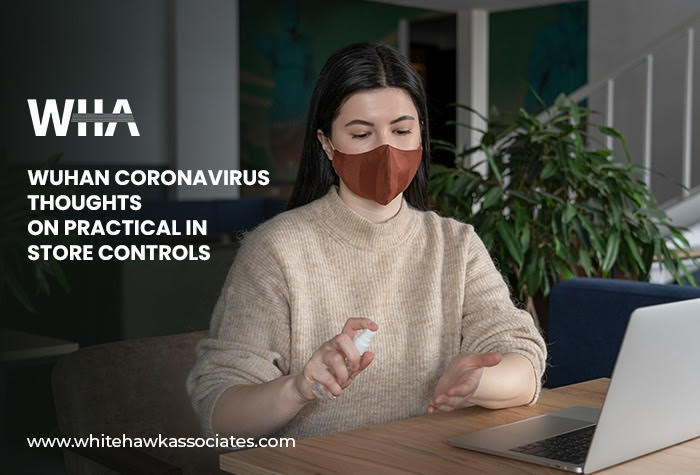The outbreak of novel coronavirus (2019-nCoV) in Wuhan and now other cities has been the main topic of discussion amongst my friends in Store Operations and QA over the Lunar New Year holiday – so I thought it may be useful to share a summary of the thoughts from people who are planning practical controls in their operations.
The response from the epidemiology experts at the WHO, CDC and others has been very impressive, and I see we already have rapid ways to confirm cases, and the actions by Governments in China and beyond have also been faster and wider than I witnessed during the SARS outbreak in 2003.
For official advice the WHO site is very useful, and it also includes downloadable posters on practical ways to protect yourself and others:
https://www.who.int/emergencies/diseases/novel-coronavirus-2019
The Lancet also has an excellent update on latest clinical details:
https://www.thelancet.com/journals/lancet/article/PIIS0140-6736(20)30183-5/fulltext
So the aim of this post is just to share some of our thoughts on what practical measures can be implemented in restaurant and retail operations.
what practical measures can be implemented in restaurant and retail operations?
We first discussed what we know so far – person to person spread now confirmed, most likely respiratory route (droplets from coughing/sneezing), fever present in most, but not all, cases, symptoms may include diarrhoea and vomiting. It seems to be similar to SARS, but likelihood of transmission (Ro) has been estimated as slightly lower at R1.5 in some reports compared to SARS at R 2.5. I also saw some alarmist reports putting the Ro at 3.5 and saying that we’re all doomed, but to put this in context the Ro for measles or chickenpox is 12-13, so it looks like practical controls can avoid the imminent extinction of the human race.
The WHO advice recommends use of properly fitted N95 masks plus regular hand washing and sanitizing, and this seemed to help with the control of SARS, so that was the basis of our discussions.
Here’s where we got to with our holiday discussions before our families insisted we get off the laptop and take them out to lunch:
1. More data needed on transmission, but we should assume its similar to SARS which was spread by respiratory droplets – coughs and sneezes, but not as bad as measles or chickenpox which is also spread by contact.
2. Incubation period around 3 to 7 days, so we need to assume anyone could be infected, but we don’t yet know when people are infectious and able to spread the virus.
3. Cases seem to be more males than females and in the 20 to 50 age groups, but this may be due to the profile of the first cases.
4. It’s now spreading beyond the original city, so it will be an additional risk globally that we need to consider going forward when planning store procedures.
5. Symptoms often include fever (98% of cases) and sometimes diarrhoea, vomiting, cough, shortness of breath.
6. Fatality rate may be similar to severe flu, so it’s not the zombie apocalypse.
7. Customer confidence is important, so any control measures need to be effective and also visible in the stores.
8.In practice we thought all this meant …..
9.All staff to wear N95 on masks when preparing food.
10.Masks to be changed daily.
11.Wash hands after changing your mask
Send communication to staff about simple, practical precautions to protect themselves; extra hand washing after using public transport or visiting public places, before eating, even at home and after using your phone. Do not touch your mouth or eyes except at home after washing hands, avoid crowded places if possible. Wear a mask when using crowded public transport. Clean your phone screen when washing your hands. Use hand sanitizer. Stress that these measures are also good for cold and flu protection, not just for the new virus.
Staff to be told to not come to work if they have any of the symptoms and to report the symptoms to their manager.
Return to work after holiday leave questionnaire – screening for people who visited China, checklist to highlight symptoms.
Send communication on extra measures in the stores including;
- Wash and sanitize hands on arrival at work
- Reinforce normal hand washing/sanitizing frequency and techniques
- Reinforce basic non-touch food prep techniques, use of gloves and personal hygiene rules
- Stress need to sanitize cashier touch screens, customer order screens
- Introduce more frequent sanitizing of customer touch points; door handles and push plates, handrails, lift buttons, tables, chairs, order screens etc
- Display posters on personal safety precautions in stores (WHO posters or similar)
- Consider switching off customer self-order screens
- Consider use of masks for non food handling staff and management including delivery riders/drivers
- And consider providing masks for visitors to the stores – maintenance engineers, stock control, service technicians
- All visitors to wash hands on entry to store
- Provide hand sanitizer for customers
- Add any new and critical controls to the regular store audits to monitor compliance
But we also thoughts that most of these controls are already part of our normal food safety controls, so a properly run store should not pose a special risk, and any extra measures should be practical to implement.
We also need to follow the reliable, scientific reports from trusted source, to balance the sensational social media reports, and update our practical measures as needed.

